Very few of us are picture restorers – it would drive this little artist chicken to distraction without a doubt although I’ve done a few of these preservations/restorations on other artists paintings. I was recently presented with a series of three pen drawings I had made in 1979 on board that has since faded to brown, very much so, mainly due to re-locating the framed drawings to a wall in direct sunlight.
In 1979 the board available to me could not be considered archival so once exposed to direct sunlight it went downhill very fast. Here is one of that series in its current state, remember the board was originally at least page white:
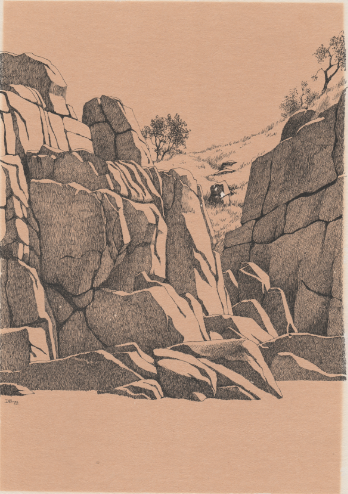
The board is on the porous side so any effort to attempt traditional means of restoration would have ended in disaster. My only option was to scan the drawings, run the file through a sequence of adjustments and provide the collector with new prints that matched the original state of black and white as closely as possible.
They will though, only ever be prints made from the original works, but at least they are not lost forever. This is the first run though to restore the black and white nature of the originals:
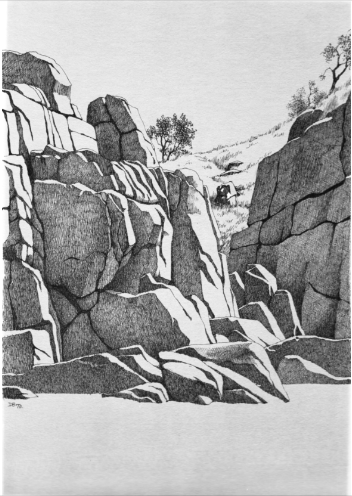
It would be easy not to bother, but the collector knew the subject in his youth and connected immediately with those commanding granite ramparts and the drawing method. Refreshing the series as prints (he will still hold the originals) will provide him the opportunity to enjoy the work just as he did so many years ago.
The repair process is purely digital – scan, retouch where necessary, adjust to remove as much of the sepia-looking fade in the board, then print on a digital printer to go back into the original frames.
It’s worth considering the original cross-hatch method used:
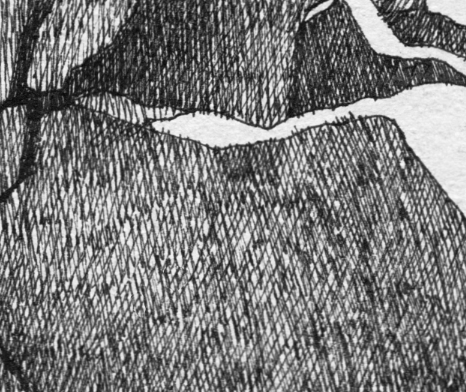
The cross-hatch needed to remain clean and open to achieve any useful degree of tonal change throughout the drawings and the process was of course fairly time-consuming but the end product very rewarding.
The process of scanning was intended to hold as much line detail as possible and avoid over saturation of the line so the board would still show through between the cross-hatch, to not do so would see a significant deterioration of the tonal quality of the work and the integrity of the pen lines. The drawings were scanned at full size at 600dpi – quite excessive for most situations but necessary to hold the linework detail.
So here is the final result, three drawings (or prints thereof – not the originals) ready to frame as a new set.
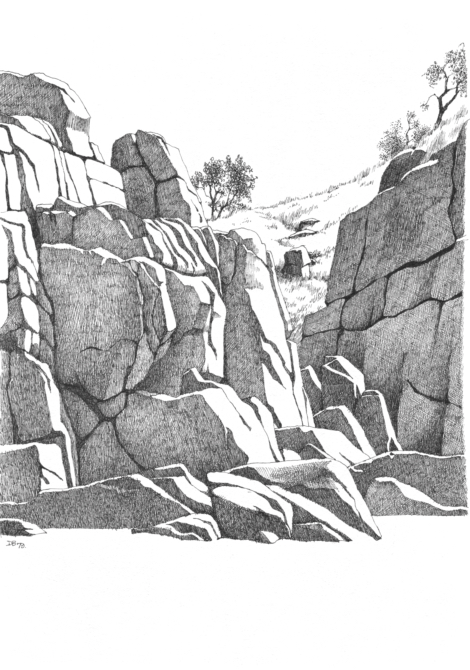
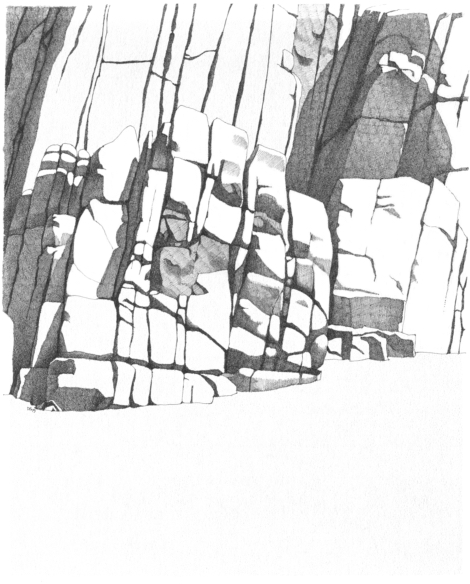
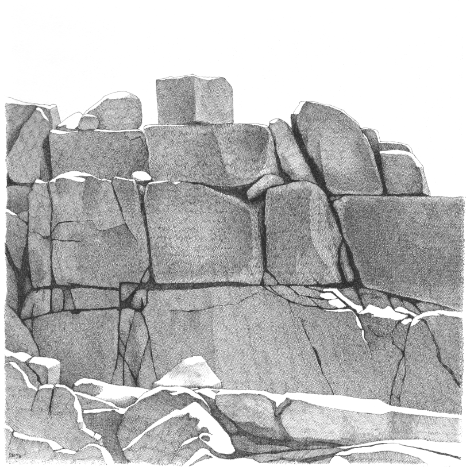
The granite hills at Little Bay descend northwards to Trial Bay Goal on Laggers Point. Trial Bay is one of the most spectacular bays on the Mid-North Coast of NSW. From the beach below the goal you can watch the sun set over the water looking west – a very special place with a lot of history.
The natural granite walls and blocks in Little Bay itself face eastwards into the Pacific surf. While these drawings were made many decades ago the place is as fresh today as it was then. I was eventually going to paint these ramparts but nevergotaroundtuit just hasn’t come by yet…